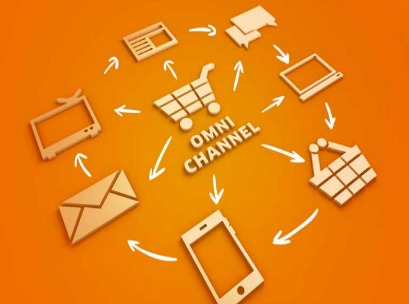Can bricks and mortar sales really be easily shifted online? Or is there more merit in coaxing online shoppers into physical stores? With rental space and staff expenses rising, there’s talk that retailers should be driving shoppers online and shutting some of their physical stores to reduce costs. But is this a wise strategy? Recent research by Temple University’s Xueming Luo, who worked with a Chinese department store, debunks the assumption that bricks and mortar sales can be easily shift
ed online.
The study, detailed in the Harvard Business Review, found that encouraging online customers to visit a store increased profits, but incentivising instore customers to shop online decreased them.
One reason for this was found to be that customers who shop instore tend to buy more, partly because they make more impulse purchases. They’re also more willing to buy tactile, “experiential” goods such as apparel, shoes and make-up. And they’re less likely to compare prices, because that’s harder to do instore than online.
“There’s a sense that you must have a very strong digital connection with your customer, but encouraging them to come into your store creates lots of opportunities for engagement, as well as to upsell, cross sell and side sell,” said Paul Greenberg, CEO of the National Online Retailers Association.
As a co-founder of www.dealsdirect.com.au, Greenberg helped to pioneer online retail in Australia. Nonetheless, he told Inside Retail Weekly that, “While I still love online, I have had to learn the lesson that there is not going to a be one winner – online or bricks and mortar – and anyone who is still peddling that is behind the eight ball.”
For Greenberg, the trend is towards convergence and multi-touch points, which he describes as “phygital” – where the physical and the digital meet.
“Customers shop by brand and not by channel,” he said. “They research online and they buy offline, or vice versa. They want to be able to move around and I think it’s all landed at multi-touch retail.
“Customers coming into the store are a lot more educated and empowered now because they can research online. They are also doing comparative pricing on their mobiles while instore. Good retailers know this and are enabling the journey, rather than trying to lock it down. That’s because they want to keep customers instore.”
Turning a profit online
Greenberg admitted that there aren’t many examples of online retailers in Australia making a lot of money. Yet, some Australian retailers who aren’t very big online are very profitable.
“If you are calling yourself an online retailer, you are saying you are a one-channel-to-market retailer. While that was exciting five or six years ago, it’s a bit passé now.”
Brendan Sweeney, general manager of e-commerce at Cotton On Group, added that typically, online shops are higher value than instore shops due to customers shopping up to the free delivery threshold.
“But the best approach is to always remain customer focused and channel agnostic rather than trying to ‘force’ customers one way or the other,” he advised.
Sweeney believes that which channel you should focus on promoting very much depends on the retail sector you are in, your relative costs and the needs of your customers.
“For example, in lower margin ‘self-serve’ formats such as grocery, hardware and discount department stores, it can be more expensive to have an online operation so operating via this channel may make less sense than it does for a different sector,” he says.
“On the other hand, hybrid retailers do have distinct advantages like greater brand awareness, low cost of customer acquisition and the ability to leverage the convenience of their store network for services such as instore return and ‘click and collect’. Their customers also have the ability to see and touch products before making the purchase through whichever channel best suits them.”
Sweeney said studies show that making it easier for customers to shop across all channels, whenever and however they want, would lead to a significant increase in spend.
“However, we should never assume that we can force or dictate the customer to shop on a particular channel. Instead, we need to focus our efforts on making sure the experience we’re offering them, whether online or off, meets their needs and is the best it possibly can be.
“For us at Cotton On, both our website and email communications are designed to showcase our great product ranges as well as value offers that we have both instore and online. Typically, we find this drives a significant amount of trade instore.”
Sweeney concluded that the reality is that today’s customers have more options than they’ve ever had before – and are therefore in a position to choose whichever channel or platform best suits them.
“The priority needs to be around making sure all of your channels are operating seamlessly and meeting individual customer needs,” he argues.
“We know that over 60 per cent of customers conduct research online before visiting actual stores, so one of the key things for us is identifying the different reasons customers visit those online stores first and focus on making sure that the experience they have there isn’t just meeting their needs, but inspiring them to explore and interact with the brand in a deeper, more engaging way.”

